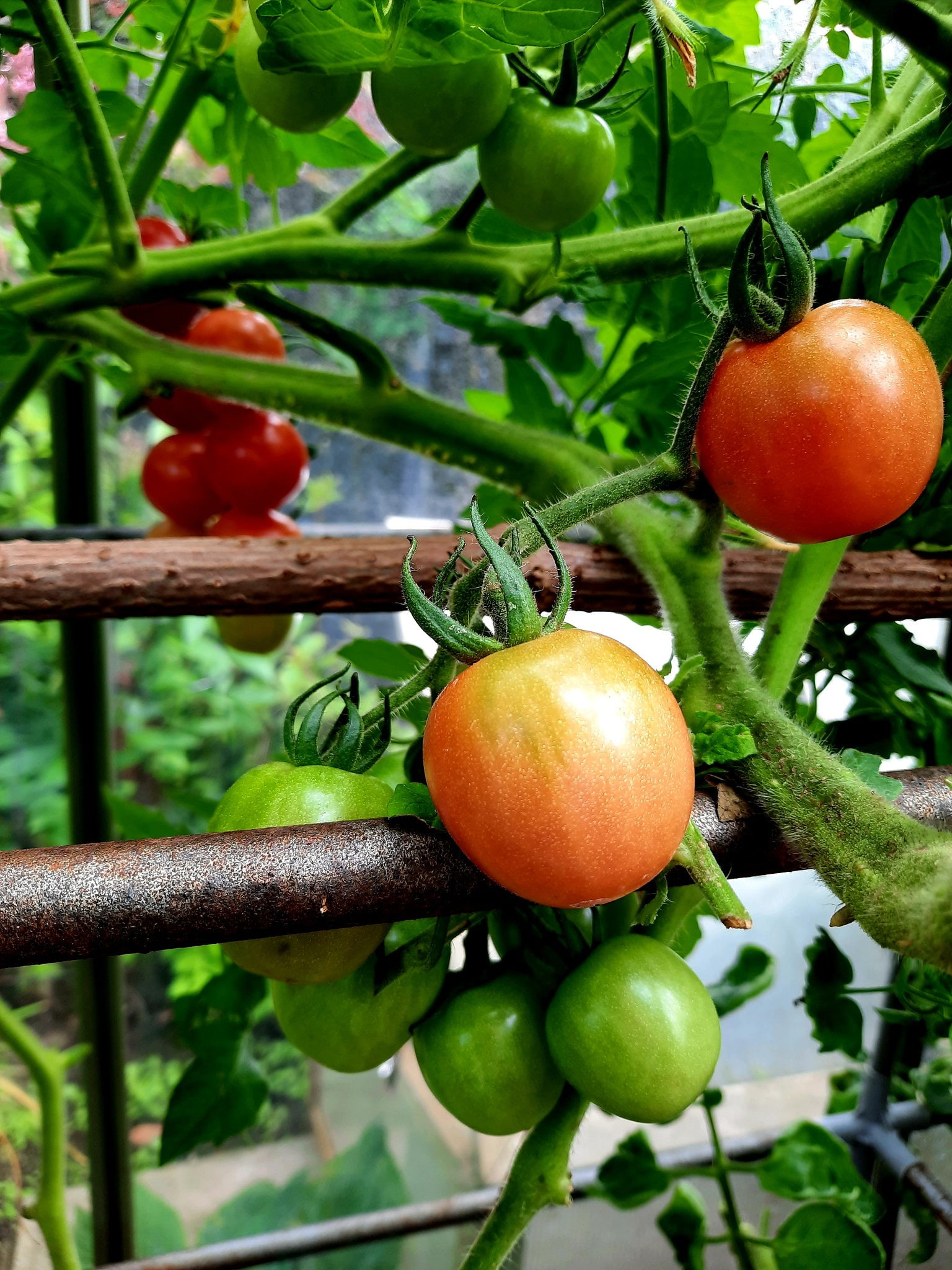
As temperatures start to drop, many gardeners wonder if it’s possible for overwintering tomato plants. While tomato plants are not naturally perennial in temperate regions, with the right knowledge and care, they can be successfully overwintered. In this article, we’ll provide you with tips on how to keep your tomato plants thriving during the winter months.
Are Tomato Plants Perennial?
While we typically treat tomato plants as annuals in temperate climates, they are actually perennial in their native tropical and subtropical regions. Wild tomato species can live for multiple years as herbaceous perennials or short-lived woody perennials.
However, modern cultivated tomatoes have been intensively bred as annuals focused on maximum fruit production in a single warm growing season. Our garden varieties lack the cold hardiness, disease resistance, and adaptability to thrive year-round in colder conditions.
That said, it is possible to sustain tomato plants for more than one year through careful overwintering indoors, at least in theory. In practice though, the energy required to carry declining, disease-prone plants through multiple winters rarely justifies the small head start it provides the next season.
While an intriguing concept, perennializing tomatoes is quite challenging compared to starting fresh plants annually. The breeds best suited for overwintering are often marginal producers the next year. Still, dedicated gardeners can experimentally overwinter select vigorous plants as an educational hobby.
Ultimately though, cultivated tomatoes remain functionally annual plants, evolved for prolific warm season fruiting. Treating them as annuals optimized to each growing zone’s window of opportunity is usually the most productive approach for harvests.
Choosing the Right Variety
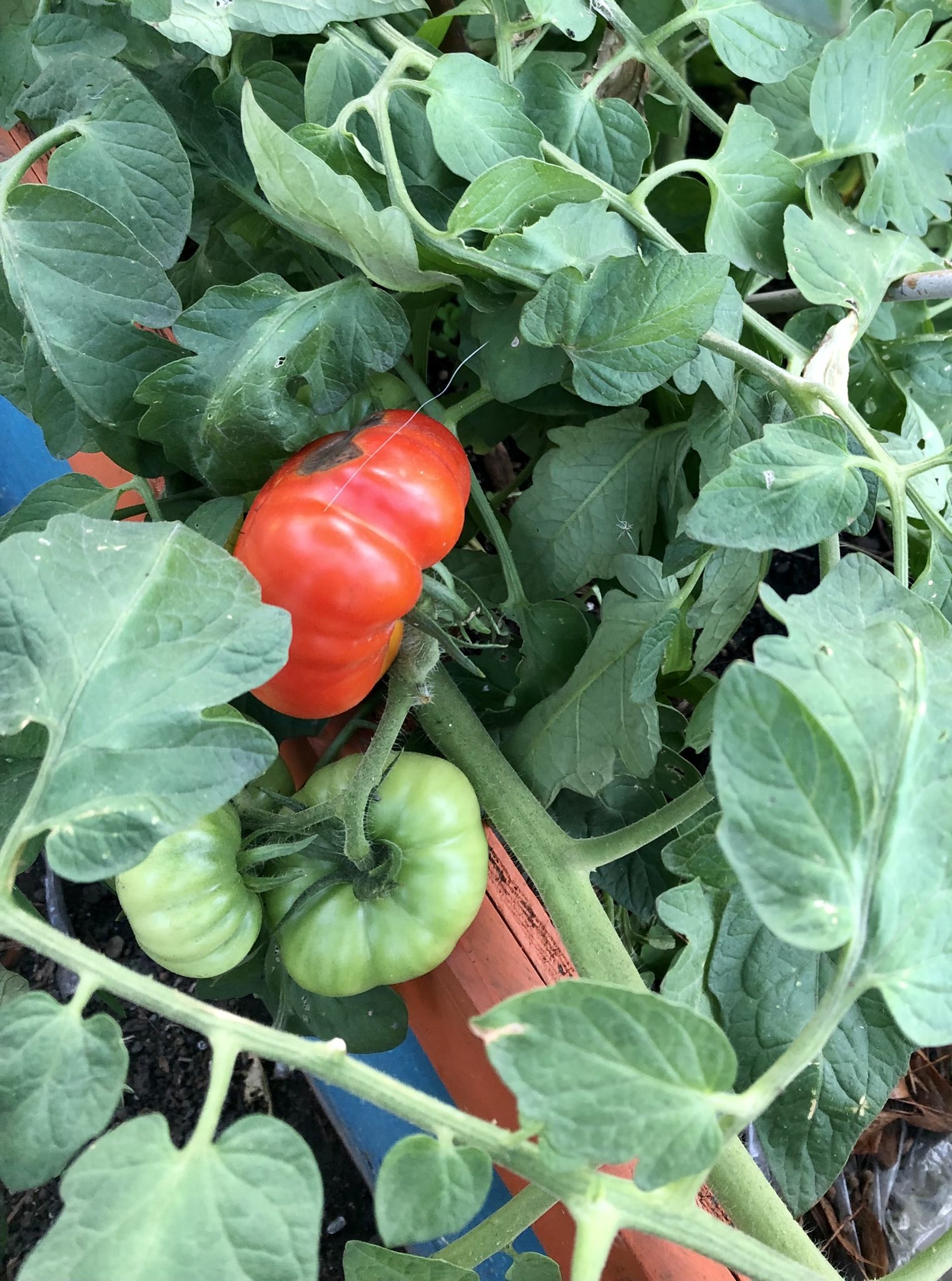
The key to successfully overwintering tomato plants is selecting compact, cold-tolerant varieties adapted to low light and minimal growth over extended periods.
For whole plant overwintering, choose bushy determinate varieties under 3 feet tall, such as Elfin, Pixie Hybrid, Tiny Tim, and Baby Boomer. Dwarf indeterminate types like Window Box Roma and Micro Tom also work well. Prune these plants back by at least 50% before bringing indoors.
Heirloom wild tomato species have higher cold hardiness for overwintering whole plants, including currant tomatoes (Solanum pimpinellifolium), Humboldt tomatoes (Solanum humboldtii), and dwarf “Siberian” tomatoes. Trim back any leggy growth before moving inside.
Larger indeterminate tomatoes like beefsteaks and oxhearts cannot be overwintered as full plants – they require too much light and space. However, take tip cuttings from these varieties in late summer and root them for overwintering.
Wherever possible, choose vigorous container-grown plants for overwintering rather than freshly dug-up garden plants. Avoid regressive types prone to reverting to hard-to-manage wild traits over the winter rest period.
Monitor overwintered tomatoes closely for pests, diseases, and water needs. Provide adequate warmth, humidity, air circulation and nutrition in bright sunny windows or under grow lights. With proper care, even temperamental heirlooms and cherry tomatoes survive until spring.
Overwintering Tomato Plants in Containers
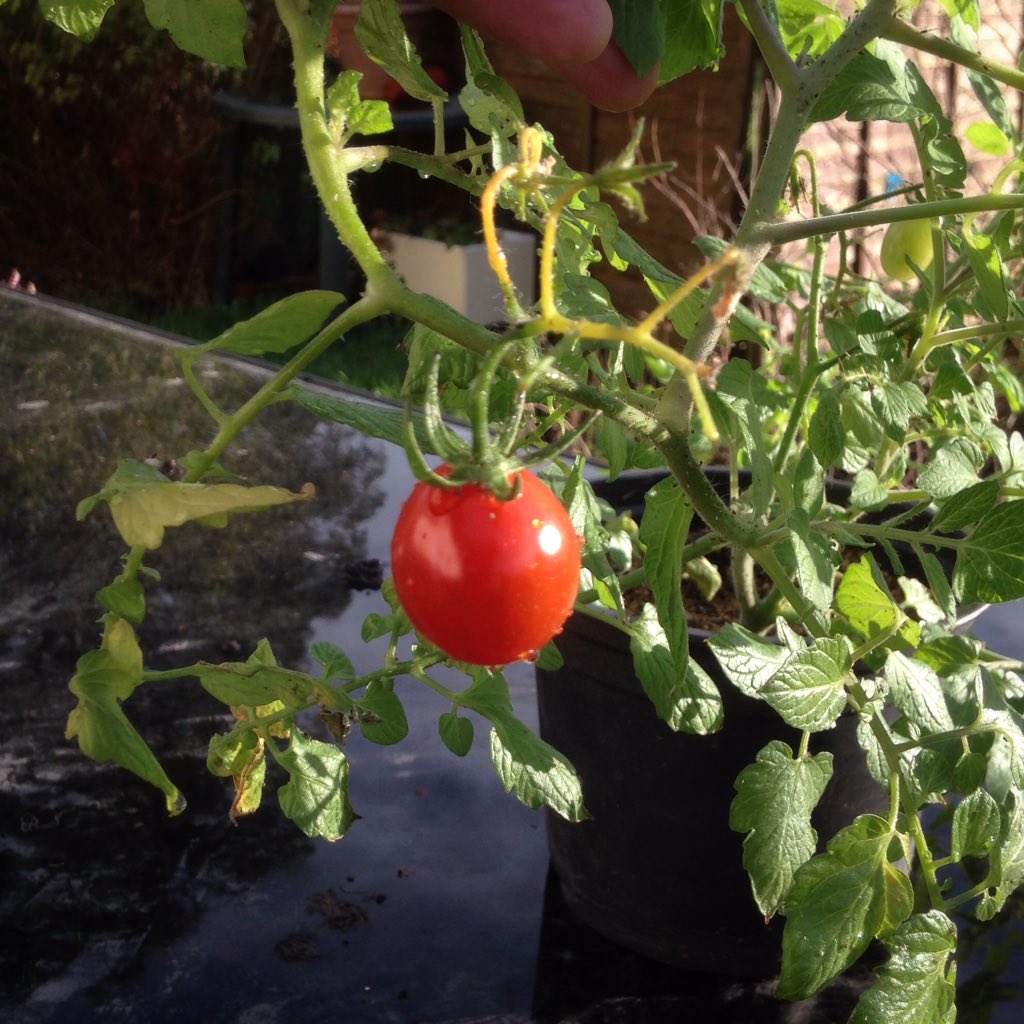
Overwintering potted tomato plants indoors requires selecting the right varieties, providing adequate light, maintaining proper temperatures, and continuing care all season long.
Start by choosing compact determinate varieties under 3 feet tall, or wild heirloom types with higher cold tolerance like currant, dwarf “Siberian”, and Humboldt tomatoes. Only overwinter plants already cultivated in containers, not recent transplants.
Move containers to the sunniest indoor location possible before frost hits. South-facing windowsills or bright conservatories are ideal overwintering spots. Supplement natural light with grow lights to provide at least 14 hours of daily light. Keep plants between 55-70°F for best vitality.
Monitor soil moisture carefully in lower light conditions, watering when the top few inches become dry. Use a diluted liquid fertilizer monthly to provide nutrients without promoting excessive foliage growth. Prune tomato plants in containers occasionally to encourage branching and manage size.
Watch for pests like whiteflies and aphids that thrive indoors. Treat any infestations promptly and be vigilant about isolation from other houseplants. Rotate containers occasionally to ensure even sun exposure on all sides.
In spring, harden off overwintered plants slowly before moving them back outdoors after all the danger of frost. Shelter them under cloches or row covers as needed until they adjust to the brighter light and wind. With diligent care, overwintered container plants reward you with an early start to the next tomato season.
Dealing with Overwintered Tomato Plants
Caring for overwintered tomato plants requires attentive monitoring and restraint in pruning, even when they exhibit leggy growth or other changes in appearance.
Elongated, spindly shoots develop as the plants attempt to reach more light. Avoid removing these or you’ll further limit the plant’s ability to photosynthesize. The same goes for yellowing lower leaves, which aid dormant plants.
Let side shoots and suckers remain as well, as removing them forces excessive branching that depletes energy reserves. Resist the urge to prune too aggressively.
However, very thin and weak shoots signal plants are stretching for light beyond what’s sustainable. In this case, move them to the brightest location possible or supplement with grow lights for 12-14 hours daily. LED grow lights minimize energy use.
Check frequently for pests like whiteflies or aphids that thrive on indoor plants. Isolate and treat any infestations promptly. Monitor for powdery mildew, anthracnose and other fungal diseases.
Come February/March, prune back any spindly shoots and transition plants to outdoor conditions gradually. Avoid sudden changes in light, temperature and humidity. With attentive care tailored to plants’ lower needs, dormant tomatoes will revive and fruit abundantly come spring.
Overwintering Tomato Cuttings
Overwintering tomato plants from cuttings is an easy, space-efficient method for getting a jumpstart on next year’s garden. With proper care, cuttings root readily and regrow vigorously the following spring.
Start by identifying healthy parent tomato plants with traits you wish to propagate like high yields, disease resistance or cold tolerance.
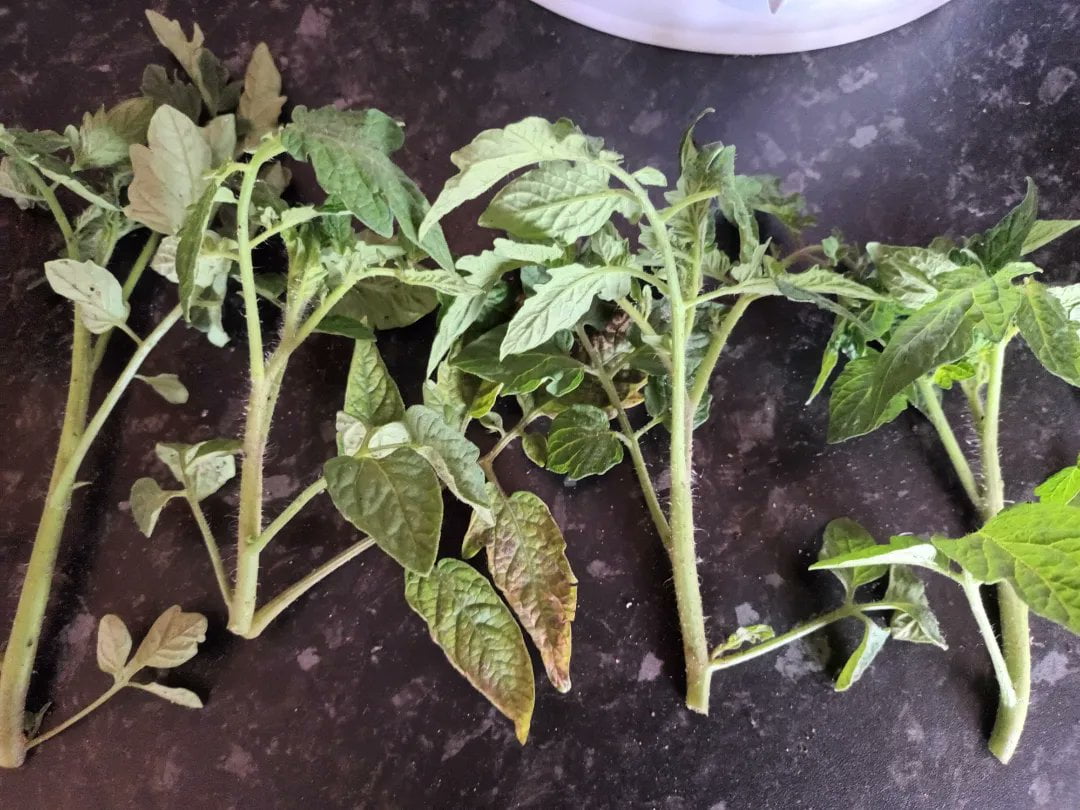
Take 5-6 inch stem cuttings from the tips of branches in late summer, ideally before the first frost. Remove lower leaves and let cuts callous for a day.
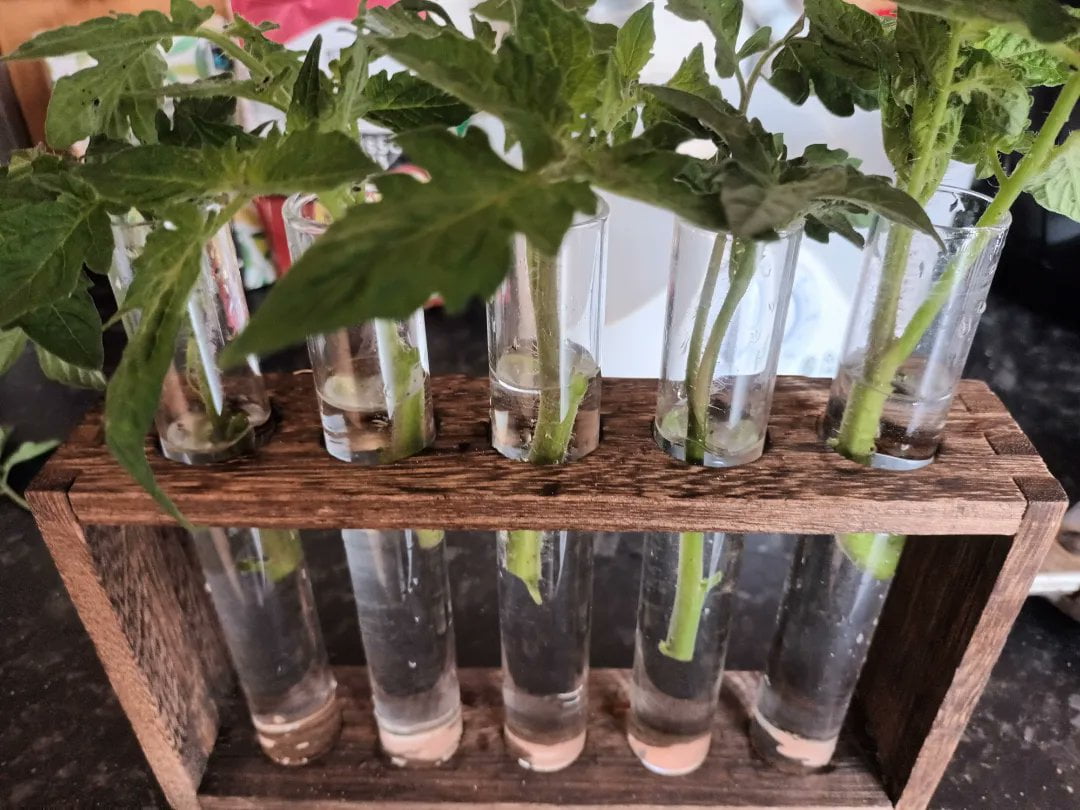
Root tomato cuttings by placing them in jars of clean water in a bright spot, changing the water every few days. Roots should emerge in 1-2 weeks. Or, dip cut ends in rooting hormone and place in the sterile seed starting mix. Cover with plastic to hold humidity.
Once rooted, transplant into 4-6 inch pots filled with fertile potting mix amended with extra perlite for drainage. Fertilize monthly with 1⁄4 strength balanced liquid fertilizer over winter. Grow on a sunny windowsill.
Keep overwintered cuttings at 50-70°F with high humidity. Prune plants to encourage bushy growth. Transition to full sun & temperatures around 70°F in spring 8 weeks before the last frost.
Hardened off, overwintered tomato cuttings transplant easily in late spring, quickly establishing and beginning fruiting weeks ahead of seed-started plants. With proper care taken in preparing, rooting, and tending cuttings, they yield a vigorous head start to next year’s tomato crop.
Disclaimer:
While the tomato overwintering tips provided are research-based and reflect general best practices, it is important to emphasize that success rates can vary significantly depending on individual circumstances. There are many factors that may impact outcomes, including:
- Regional climate conditions – The local environment plays a huge role in overwintering viability. Colder climates with shorter growing seasons present greater challenges than warmer, longer ones.
- Growing conditions – Soil quality, sunlight exposure, wind protection, and other variables in the garden space can affect plant health and thus overwintering capability.
- Plant health – Only very vigorous, robust plants with good disease resistance should be selected for overwintering attempts. Weaker or diseased plants likely won’t survive.
- Gardener diligence – Meeting the steady demands of light, watering, pest management, and ventilation for overwintered plants is crucial and labor-intensive.
- Genetic factors – Some tomato varieties are simply better suited for overwintering than others due to their genetics.
While the advice presented reflects general best practices, individual gardeners’ mileage may vary. It’s always wise to consult local gardening resources and experts to understand region-specific guidance. Testing different techniques each season helps determine what works best for your specific growing conditions.
